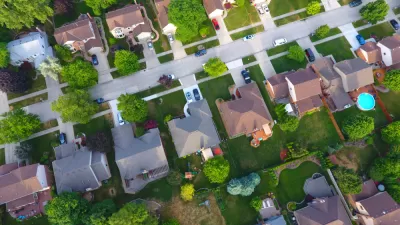Author Catherine Tumbler writes on how this Rust Belt city on Lake Erie is attempting to capitalize on its past, reverse its mistakes, and build a greener economy.

"Between 1950, when the population stood at 580,000, and 2000, Buffalo lost about half its residents, hollowing out entire neighborhoods and large parts of downtown. (Locals rejoiced when the estimated 2012 census showed that the exodus had slowed to a trickle.) Deindustrialization and outsourcing account for much of the disaster. But so does metro Buffalo’s ever-widening loop of suburban sprawl, set in motion by mid-twentieth-century subsidized housing and commercial property policies that amounted to de facto affirmative action for second-generation white immigrants. By 2000, Buffalo’s metro footprint had expanded to three times its 1950 size, but the population remained relatively constant. This meant (among other things) that the same number of people supported three times the infrastructure—including schools, roads, sewer and water lines, and police and fire protection—in a fiscally reckless, politically divisive, agriculturally improvident pattern known as 'sprawl without growth.'"
FULL STORY: Buffalo Exchange: Retrofitting a Rust Belt capital

Alabama: Trump Terminates Settlements for Black Communities Harmed By Raw Sewage
Trump deemed the landmark civil rights agreement “illegal DEI and environmental justice policy.”

Study: Maui’s Plan to Convert Vacation Rentals to Long-Term Housing Could Cause Nearly $1 Billion Economic Loss
The plan would reduce visitor accommodation by 25% resulting in 1,900 jobs lost.

Why Should We Subsidize Public Transportation?
Many public transit agencies face financial stress due to rising costs, declining fare revenue, and declining subsidies. Transit advocates must provide a strong business case for increasing public transit funding.

Paris Bike Boom Leads to Steep Drop in Air Pollution
The French city’s air quality has improved dramatically in the past 20 years, coinciding with a growth in cycling.

Why Housing Costs More to Build in California Than in Texas
Hard costs like labor and materials combined with ‘soft’ costs such as permitting make building in the San Francisco Bay Area almost three times as costly as in Texas cities.

San Diego County Sees a Rise in Urban Coyotes
San Diego County experiences a rise in urban coyotes, as sightings become prevalent throughout its urban neighbourhoods and surrounding areas.
Urban Design for Planners 1: Software Tools
This six-course series explores essential urban design concepts using open source software and equips planners with the tools they need to participate fully in the urban design process.
Planning for Universal Design
Learn the tools for implementing Universal Design in planning regulations.
Smith Gee Studio
Alamo Area Metropolitan Planning Organization
City of Santa Clarita
Institute for Housing and Urban Development Studies (IHS)
City of Grandview
Harvard GSD Executive Education
Toledo-Lucas County Plan Commissions
Salt Lake City
NYU Wagner Graduate School of Public Service





























